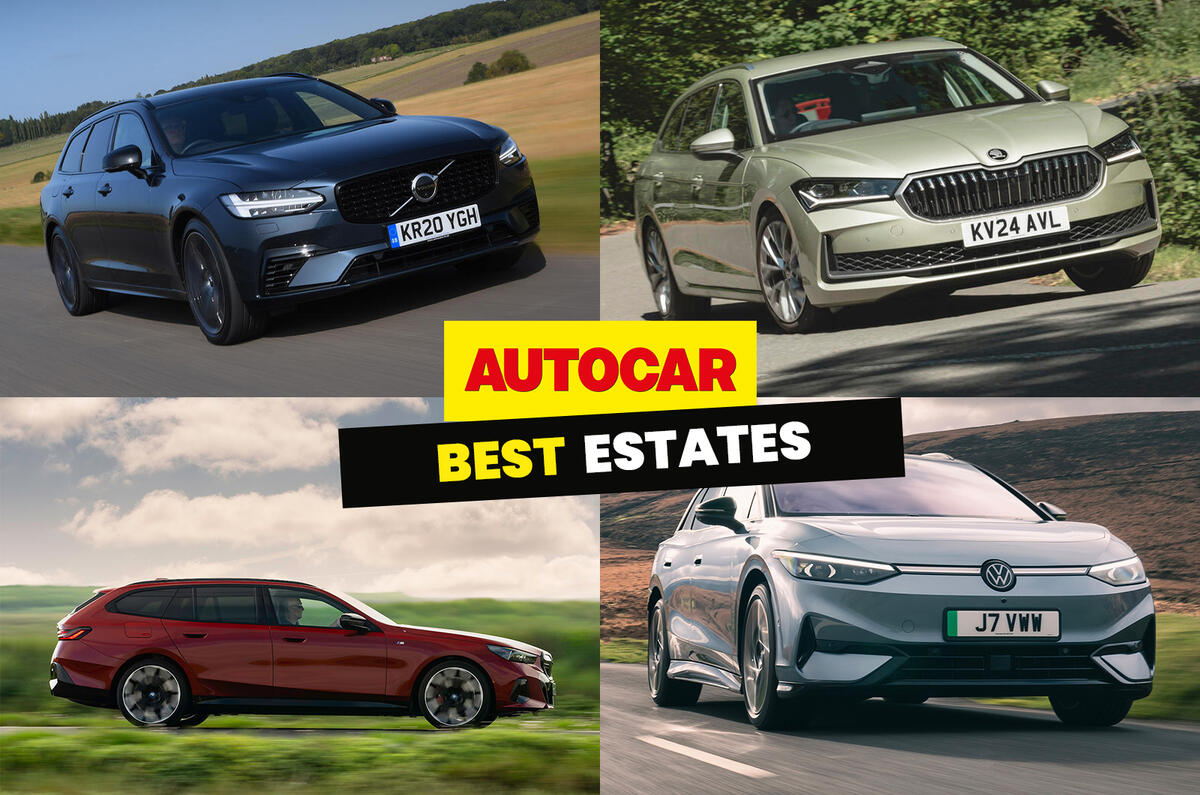Despite the growing influence of SUVs, the estate car is still a strong presence in the UK car market.
There are several reasons for their continued popularity, ranging from their daily versatility to their huge levels of practicality.
The best estate cars are also better to drive than most SUVs, often surpassing their high-riding counterparts in terms of interior space and versatility. Many argue they satisfy the cliché of being 'all the car you'll ever need.'
The current crop of estates is incredibly diverse, too, which means there are endless options when it comes to size, performance and functionality.
The list is so broad that you can have anything from a simplistic, mile-munching diesel to a more luxurious, materially-rich shooting brake.
There's also a growing choice of electric estate cars on sale, with models from brands including Volkswagen, Audi and MG.
Be it superb ride comfort, exceptional efficiency or supercar-baiting performance and handling, there’s an estate to suit every taste and budget.
We think the best estate car on sale today is the Skoda Superb, which lives up to its name thanks to its spacious interior, versatile powertrain lineup and its driving dynamics to such a degree that we rated it a perfect five stars in our road test.
There's a host of other rivals worth considering, though, so read on as we list the 10 best estate cars on sale in the UK today.
Best for: Daily driving
Big, traditional and offering a choice of petrol, diesel and hybrid powertrains, the Skoda Superb is a prime example of how Skoda can use Volkswagen Group’s hardware and software and tweak them to create a truly likeable, accessible and more usable car.
The fourth-generation model majors on practicality, versatility, comfort and ease of use, much like its predecessor, only this time there's even more space inside and greater efficiency from its engines.
It rides on the same MQB Evo platform as the Volkswagen Passat, hence it offers the same 690 litres of boot space – or 1920 litres with the 60/40-split rear seats folded flat. Boot space drops to 510 litres in the plug-in hybrid version, with its huge 25.7kWh battery stored under the boot floor.
We can't fault the Superb’s PHEV credentials, though, as it promises a company car tax-friendly electric-only range of 84 miles. Impressive stuff.
There’s the usual mix of petrol and diesel engines, with the latter being tipped to be a big seller here, after the PHEV and 1.5-litre mild-hybrid petrol. The diesel is quiet, hard-working and has the potential for good fuel economy.
The Superb isn’t particularly sporty or overtly comfortable, but it neatly balances the two. The long body is kept well in check and the steering builds weight as you load up the suspension in a corner, giving you plenty of confidence in the car’s roadholding.
Read our Skoda Superb Estate review




Join the debate
Add your comment
It may have software niggles but I though the MG5 SW might have got a mention.
Great (not). Yet another multiple-times-rehashed article.
An estate car was originally designed to carry big loads with the comfort of a normal car. I'm commenting on the March 2024 version which has BMW 5 and 3 touring as 1st and 3rd, with a paltry 560 and 500 litres of boot space. I mean, really? Even my unmentioned Golf Estate has 600, and a Skoda Octavia (also not mentioned) has more than that. Sandwiched between them is the Dacia Jogger which has been squeezed into the category for a laugh.
Better your skates on to buy one of those before the end of 2023...
Perhaps wait until the 30th and negotiate a hefty rebate?